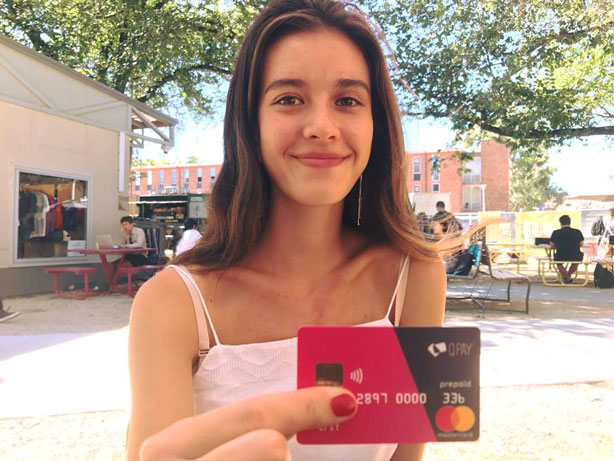Australia’s first ever student marketplace app, QPay, has raised $570,000 from a series of high profile investors, including Sydney Angels and the Sydney Angels Sidecar Fund 2, to break into student banking through the release of a student-targeted QPay MasterCard.
 QPay aims to use the QPay MasterCard to capture the largest cluster of millennial consumers at the point when they’re most likely to begin making serious financial decisions – when enrolled in tertiary education.
QPay aims to use the QPay MasterCard to capture the largest cluster of millennial consumers at the point when they’re most likely to begin making serious financial decisions – when enrolled in tertiary education.
“University is the time when life decisions start to become quite future-focussed, especially regarding our finances,” said Andrew Clapham, Co-Founder of QPay.
“We might be weighing up the amount of student debt we can responsibly accrue, and what return we might expect to receive career-wise. We could be trying to save for a deposit on a property, and wondering the best place to deposit our cash. Or, we might simply be getting a handle on our first experience with budgeting outside of Mum and Dad’s house.
“Whatever the case, university is a crucial turning point for financial decision-making. And the thousands of student transactions occurring on our app each month have allowed us to develop a financial product that perfectly suits the financial behaviour of this group.
“Given that universities arguably comprise the largest cluster of millennials anywhere in Australia, we see this as our first step towards becoming the next challenger bank for millennials,” said Andrew Clapham.
QPay is already used by more than 150,000 students across all major Australian and UK universities, including the University of Sydney, Melbourne, and Queensland, and the University of Oxford and Cambridge. The QPay MasterCard will build on the financial behaviour of these students by uniquely tailoring the rewards it offers every time the card is used for a purchase.
“If you’re a frequent coffee drinker, expect a free coffee from your local coffee shop, or if you regularly shop from a certain store, your next purchase may come with a 50% discount,” continued Andrew Clapham.
“Students are always looking for affordability and convenience – the best deal for the least amount of effort – which is why QPay is being so strongly embraced across all of these universities,” concluded Andrew Clapham.
QPay is backed by a Corporate Authorised Representative with an AFSL license, and the waiting list for the MasterCard has already grown to 4,305 students, far exceeding the initial goal of 2,000 cards.
This proof of concept was a key attraction for QPay’s prestigious investors, which include the head of Royal Bank of Scotland’s Australian arm, Andrew Chick, world-renowned leadership consultant, Charles Carnegie, and prominent angel investor, Rayn Ong.
“QPay’s viral acquisition strategies have created a high level of adoption and engagement even at this early stage,” said Rayn Ong, lead investor and non-executive director of QPay. “It makes sense to take it one step further by bundling relevant deals into the MasterCard offering.”.
QPay received $400,000 from Sydney Angels in 2016 in its first funding round, and has since performed over $11 million transactions for university students – a number which is projected to double by the end of 2018.
The original idea came when the co-founders were students, and realised there was no single access point for student needs such as second-hand textbooks, timetabling, accommodation, student organisations, and campus events.


